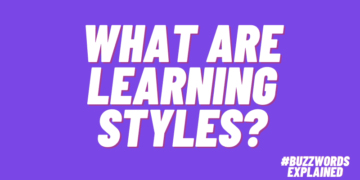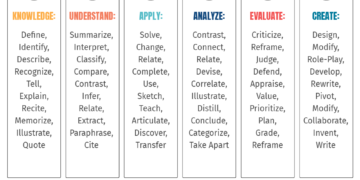How To Design More Effective Soft Skills Training
Hard skills often take center stage when creating an organization-wide learning strategy. Whether it’s learning the ins and outs of a new product, teaching employees a new procedure, or checking compliance training off of your to-do list, hard skills often take precedence because they are the absolute must-haves for learning. Because of this, organizations often overlook the importance of soft skills training: learning that helps reinforce behaviors and skills like teamwork, communication, and problem-solving.
Soft skills can be confusing because they often seem like they’re personality-based. After all, how do you teach someone to be a “people person”? But while it’s true that some soft skills come more naturally to some people than to others, it’s possible to use training to model, reinforce, and yes, even teach those ever-elusive soft skills to your workforce.
It’s a win-win situation. A 2019 Society for Human Resource Management study found that 37% of managers felt “problem-solving and critical thinking” were missing skills, and 31% cited communication as the main issue in their skills gap woes. When you take the time to focus on soft skills training, employees hone the skills and characteristics they need for long-term success in both their professional roles and in life as a whole.
Have we convinced you yet? Soft skills shouldn’t be hard to figure out. Here’s a primer on why you should care about soft skills and how you can design better, more effective soft skills training for your employees.
Why Soft Skills Training?
Soft skills are often taken for granted, especially when you hire personnel who seem naturally good at interpersonal communication and social skills. But even if you’ve hired the best of the best, no employee is perfect, and missing soft skills can take a toll on your organizational goals and your big-picture success. Consider some of the benefits of adding soft skills training to your Learning and Development strategy:
- Customer satisfaction
Everyone wants to feel heard. Communication and social skills training teaches employees how to interact with customers using empathy and problem-solving skills that drive customer satisfaction and may even drive future purchasing decisions. - Employee retention
If you’ve noticed that your organization struggles with employee retention, consider how soft skills training could help improve numbers. Investing the time in soft skills training helps employees better relate to one another, as well as reinforcing healthy and effective behaviors that create good team members and leaders with the potential for long-term success with your company. - Increased sales
You might have hired your sales team because of their amazing interpersonal skills, but what if everyone learned to become better communicators, problem-solvers, and leaders [1]? With the right training, everyone in your organization can become an effective ambassador, potentially increasing your sales and revenue. - Stronger teams
Reinforcing soft skills like active listening, clear communication, and empathetic decision-making all serve to strengthen bonds between team members. Whether it’s effective delegation, bringing up new ideas, or simply sending a clear and concise email, soft skills benefit any team working, supporting, and succeeding together. - Leadership succession
When you know that your employees have the skills to lead, you’re more comfortable offering opportunities to do so. Soft skills training gives learners the practice they need to become leaders, and allows you to plan more effectively for leadership succession and professional development. - Decision-making
Two of the most important soft skills are problem-solving and decision-making. By training employees on how to make educated and empowered decisions, you can show more trust in your workforce’s ability to work through problems and brainstorm solutions.
How To Design Soft Skills Training
When designing hard skills training, it’s easy to know how to create the content. Safety training, for example, might require a series of steps that everyone should do. Soft skills, on the other hand, are driven by personality and require a more diverse, “soft” approach, allowing practice and feedback in a safe and effective way. Try adding these methods to your soft skills strategy for a more holistic approach.
1. Coaching And Mentoring
One of the best ways to develop soft skills is to enlist the help of those who already exhibit these behaviors. When paired with a coach or mentor, learners can get a more personalized look at where they excel and where they could use some extra training. Mentoring also offers an opportunity to observe soft skills in action.
2. Role-Playing Games/Scenarios
One of the easiest ways to practice soft skills is by using role-playing games. Scenarios and role-playing work because soft skills aren’t a perfect science. Different decisions will have different results depending on everything from the people involved to the circumstances and even personal preferences and personalities. Role-playing allows learners to practice their soft skills before deploying them in the workplace.
3. Gamification
Game mechanics like levels, challenges, badges, points, and competition can help increase learner engagement, making gamification the perfect delivery method for soft skills training [2]. Games usually have an instant feedback element, so learners know exactly where they need to improve to progress through the material. This “state of play” lowers the stakes and increases opportunities for problem-solving and decision-making in a fun, engaging environment, before raising the stakes for real-world application.
4. Virtual Reality
Don’t dismiss it as a buzzword: Virtual Reality (VR) allows people to interact with other people and objects in an immersive environment. This makes it possible to practice social interactions (without actually having to deal with real-life situations) and see how decisions affect outcomes in real time. We love VR as a method for practice that feels as close to the real thing as possible.
5. Social Learning
Soft skills often refer to core interpersonal competencies, so it makes sense for social learning to be part of your development strategy. Social learning can refer to any component that allows learners to interact with others, whether on a discussion board online, in an in-person group, or by asking for feedback in a “what would you do?” scenario. Social learning helps get learners talking and using their soft skills as they work with others and build up their confidence in a group setting.
Conclusion
Never underestimate the power of soft skills: they’re what drive the day-to-day decisions and interactions in your organization. As you plan your leadership development strategy, soft skills should take center stage if you pride your company on fostering a culture of learning and growth. While they may seem like personality traits, you can teach your workforce to listen more, communicate better, and work together more effectively to reach your goals.
Ready to focus more on soft skills training? Contact us and we’ll help you get started.
References:
[1] 5 Ways To Effectively Teach Soft Skills To Your Sales Team [Infographic]
[2] How to Implement Gamification in Your Training Strategy

ELM Learning
We create meaningful learning experiences to build community within an organization. Our learning programs get measurable results because we combine neurolearning® principles, design thinking, and compelling storytelling.




















